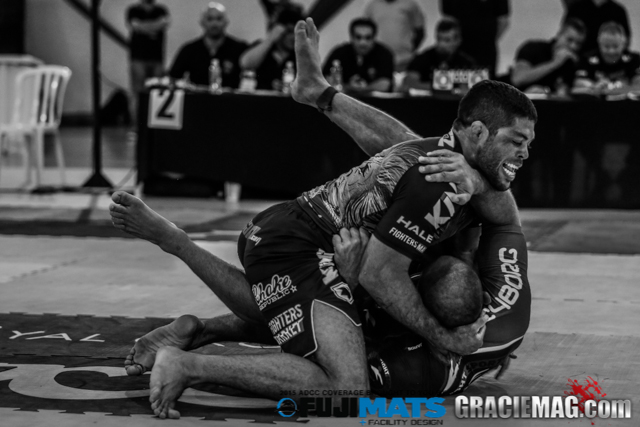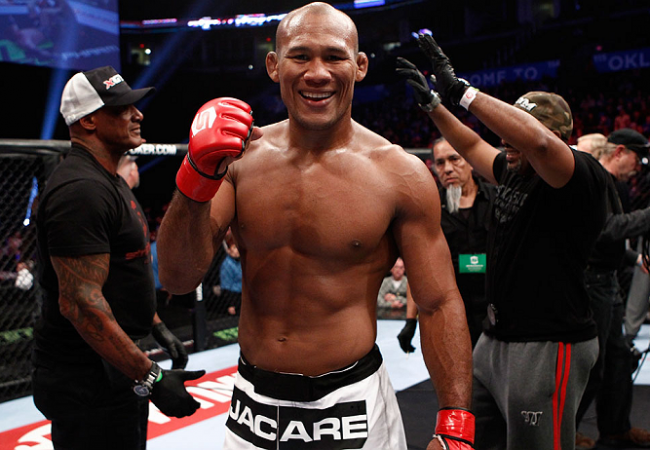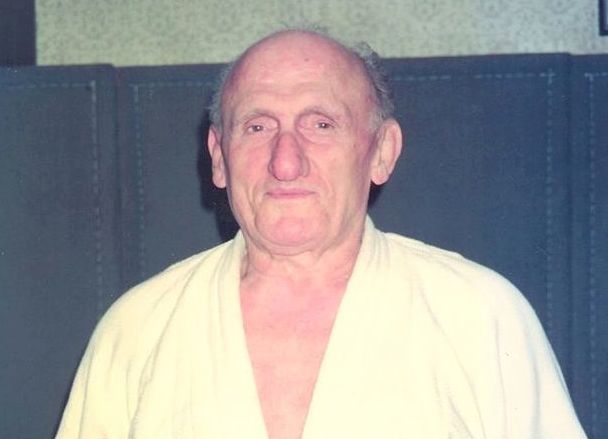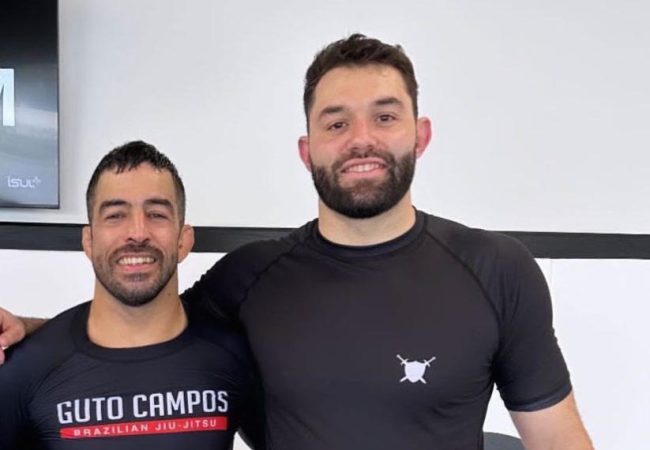A BJJ star with titles in the world’s biggest events, André Galvão has become a synonym of tenacity and success on the mats, in and out of the gi.
In an interview given to Graciemag’s print edition after another victory at the ADCC, the Atos leader went over the emotions of fighting for a title in Finland against a childhood friend and teammate, and what he does to activate his “competitor mode.”
Read on for his interview with reporter Marcelo Dunlop. Please note that Galvão speaks of 2017 as the present, as that is when the chat took place.
GRACIEMAG: You became the absolute champion at ADCC England, in 2011, when you beat Rousimar Toquinho, Pablo Popovitch and others. Two years later, promoted to the superfight, you finished Bráulio Estima at ADCC China. In 2015, you took the back of Roberto Cyborg at ADCC São Paulo. Could it be that your superfight this September with Claudio Calasans was the toughest out of this entire globe trot?
ANDRÉ GALVÃO: I believe so. Juninho (that’s what I call Calasans) and I knew since 2015 that we would fight. He’s taken part in every camp here at Atos headquarters in San Diego since 2011. We always train together. He also did the 2016 IBJJF Worlds camp with us. That was the last time we trained together. When 2017 rolled around, we had to get a little separated. We began focusing on this superfight, which was the main goal of both of us for the year. I knew he really wanted this title, and I respected that the entire time. In fact we have always respected each other a lot; our friendship is very healthy, and this fight had no power to change that. We then put bonds of friendship aside and went in search of our dream. We did it all very professionally, and all is well. With respect above all, there was no way for it to go wrong.
How do you prepare for a specific fight for two years? Did you get anxious? Did you spend months studying his game even more thoroughly?
Even though we knew about this fight since ADCC 2015, it’s necessary to take one step at a time. Nobody can stand being focused when there is a 24-month wait. It’s a long period, and there are other missions to accomplish — many things can happen in that time. During that period, I won two IBJJF world titles, in 2016 and 2017, as well as having to work to elevate my team to number one at this year’s Pan and Worlds. But I always keep my focus on upcoming fights. On top of it, I had meniscus surgery last year, in August. So it’s a marathon until fight time. There was all of this planning, but you can’t stay tied to a fight that’s only happening in two years. There is planning, but it begins with a lot of precision about nine weeks before the fight.
Let’s remember your trajectory in superfights. Bráulio, Cyborg and Calasans have completely different games from each other, but you got in there and took the backs of all three. All four, if we count the weight class final with Toquinho in 2011.
True. They all have very different traits. In fact, every fight is a different fight, but I need to keep my jiu-jitsu. I don’t think of changing my style; I just study my opponent and work on the traits of his jiu-jitsu. And team work makes all the difference in the training. What I extracted from the other fights for this superfight with Juninho was the experience gained with each duel. My style is this, and with each passing day, I’m feeling better going to the back. As you guys have been witnessing, I’ve always sought to take the back since the white belt. If you guys look into the Graciemag archives of the 2003 Worlds, when I won the purple belt absolute, you will see that the back-taking comes from way back. [Laughs.]
Have no-gi BJJ and submission wrestling been evolving as fast as classical BJJ?
Yes, a lot has been changing; jiu-jitsu, in general, is changing at a fast pace. I believe that despite being a thousand-year-old art, the sport with its current rules is still very young. The first Worlds was in 1996; the first ADCC, in 1998. We are living a phase of evolution, for sure. The evolution in classical is more perceptible and talked about, because there are world championships every year. But the evolution in the ADCC happens every other year, and it also exists. I notice a big change in the takedown side of things, in the leg attacks, heel locks and leg locks. At ADCC 2011, I invested a great deal in wrestling, and I think many people realized that it was necessary to take takedowns seriously to win there. Another aspect that has evolved is fighters’ physical capacity. Nowadays, there are more methodologies of training, of physical preparation. If we compare it to the 2003 ADCC, it’s been a huge leap.
What is your routine like on competition days?
On the day of a fight, I strive to go into total focus, and nothing can take my attention away. I try to get motivated from myself, thinking about all I’ve gone through to get that far. And then comes the transformation from Galvão into gorilla! And it comes early, as soon as I wake up. I try to keep myself not just motivated; I go a little beyond: the feeling is one of being very happy with the moment and with everything around. Many things can happen during the day to take away my focus, but I prepare mentally so that nothing can take my attention away from the target. I also strive to think about the promises that God made to me through his word. That motivates me a lot and gives me a lot of confidence. Lastly, I have a good breakfast and rest right up until fight time, because that is very important. And then, when it’s show time, it’s all about letting the gorilla loose until the end of the fight! [Laughs.]
How did it feel to be face to face with Calasans?
They called me out first, and I came out. Then he came out. Then he took off his coat, and when I looked at him, I thought, “Crap, I’m fighting this white gorilla. Let’s go!” [Laughs.] The fight began, and I sought to get a feel for the fight at first; I tried to read his body language to know what was going through his mind. I started setting the pace, and I felt that in the first four minutes, he started to get a little tired, maybe due to the psychological pressure, or for the physiologic factor. I then kept up the pace; I took him down while there were still no points in play, just to feel it. Then, when the points kicked in, I gradually cranked up my pace. Time was passing and I was getting better, and he was getting worn out. Until the time when I had the opportunity to take the back. I tried to sub him, but I think I could have adjusted better the rear naked choke and the kata-gatame as well, when I mounted. We got up again, and I kept imposing my rhythm the entire time — there were three minutes left, and I was already leading by 14-0. When the final minute started, I began accelerating more. At this time, we started talking to each other, and I don’t want to share this here, because I don’t remember what was said very well — I don’t want to say here something we didn’t say, or add something due to a faulty memory. But we just talked. Then it was all over! I won and I celebrated intensely. After everything, when we were leaving, we talked at the parking lot, and all was well.
Got any message for Calasans now that the emotion has settled down?
Dude, Juninho is a guy I love and for whom I always wish the best, because I know how much of a warrior and a hard worker he is. He is a true athlete and a great example of a champion. He may be the humblest champion I’ve met to this day.
And what about the Sunday following your bout? You just watched and cheered like an emperor at the Coliseum. What did you learn?
Yeah, I saw the guys killing each other. [Laughs.] ADCC Sundays are sensational, because you get to see the condition of all the great champions at the championship up until the finals. I was pretty confident in my students, because we had trained a lot. Keenan Cornelius, for example, who came in second at 88kg, has a very special game. He is like software that is updating itself all the time. It’s all very modern and calculated, and beautiful to see. From what I watched in Finland, I thought that many guys from this new BJJ crop have been bringing a forward-facing, intelligent game. The intelligence comes through the excess of information that they have these days, like easy Internet access, videos, books, Google, etc. This makes athletes more learned, with a much faster capacity for absorption and learning than in previous eras.
We talked about physical preparation, and we saw that many fighters arrived exhausted in the final stretch of the tourney. With this trait of putting the absolute division last, is the ADCC like the Ironman Triathlon of BJJ?
I believe he who is better prepared wins — there’s no such thing as luck. But the event isn’t that much more exhausting than other events in the gi. There’s none of that Ironman business — but, indeed, it’s another type of fighting. What really changes is the fact that you don’t have the cloth to control your rivals with. If you analyze it, those who were better prepared and focused on the ADCC’s rules won. Gordon Ryan and Felipe Pena really were the best prepared there. They were the guys who had focus in their training. I didn’t see either of them competing close to the ADCC. Felipe fought at the Worlds, and then just no-gi after that. Gordon was focused for two years to be there, and he would always mention the ADCC during interviews. They were the guys who showed no sign of fatigue, who didn’t get lost with the rules — that’s why they arrived in the most important final of the competition. It’s all focus, and knowing what your priority is. I thought that many athletes there, including renowned athletes in the BJJ world who didn’t give the ADCC 100% of their focus, got tired or lost in the rules during the event.
What is this battle in 2019 going to be like, between you and Preguiça? Who is taking whose back?
Look, after Preguiça won, I was happy for him. Now it’s all about preparing myself to do battle against another absolute ADCC champion. I’m super-happy at the moment, and at the time I wasn’t even thinking too much about how it was going to be — after all, a lot can happen until then. I know I will be older, around 37, but since I’m healthy, I believe I will get there in good shape, and with more experience. And we may even meet before that, in the gi. If a promoter wants to see this fight in no-gi, I believe they’ll have to fill our pockets, right? [Laughs.]
To wrap up, I’d like to thank my entire family — my wife, my daughter, my brother-in-law and my nieces, who are here with me in California helping me a bunch. I’d like to thank all my employees, my instructors and my students, who have helped me a lot. And my fans, who always send wonderful messages, and God, for giving me health and peace. He has guided me here.





